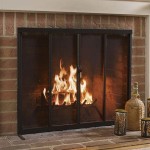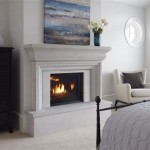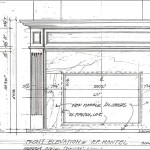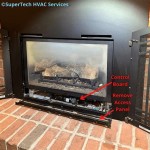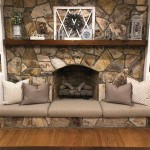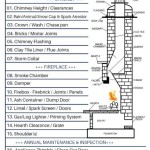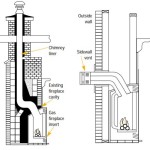Small Direct Vent Gas Fireplaces: A Comprehensive Guide
Small direct vent gas fireplaces offer an efficient and attractive heating solution for spaces where traditional fireplaces are impractical or undesirable. These units provide the ambiance of a real fire without the mess and maintenance associated with wood-burning fireplaces. Their direct vent design ensures safe operation and efficient heat distribution, making them a popular choice for homeowners seeking supplemental heating and aesthetic appeal.
The term "direct vent" refers to a sealed combustion system that draws air from outside the home for combustion and vents exhaust gases directly to the exterior through a dedicated venting system. This closed system eliminates the need for a chimney and prevents the backdrafting of harmful combustion byproducts into the living space. This makes direct vent fireplaces significantly safer and more efficient than vent-free or natural vent models.
Small direct vent gas fireplaces are particularly well-suited for apartments, condominiums, smaller homes, and additions where space is limited. They are available in a variety of styles, including traditional, contemporary, and linear designs, allowing homeowners to find a model that complements their existing décor. The installation process is typically less complex and less expensive than that of traditional fireplaces or some other types of gas fireplace inserts, as they do not require a full chimney.
Understanding the Key Features of Small Direct Vent Gas Fireplaces
Several key features distinguish small direct vent gas fireplaces and contribute to their performance, safety, and aesthetic appeal. These features include the venting system, heat output, control options, and aesthetic design.
Venting System: The direct vent system is arguably the most critical feature. It typically consists of two concentric pipes: one pipe draws combustion air from outside the home, and the other expels exhaust gases. This closed system prevents indoor air from being used for combustion, which helps maintain indoor air quality and reduce energy loss. The venting system can be installed either horizontally through an exterior wall or vertically through the roof, providing flexibility in installation options. The venting system must be installed according to the manufacturer's specifications to ensure safe and efficient operation. Improper installation can lead to hazardous conditions and void the warranty.
Heat Output (BTU): Heat output is measured in British Thermal Units (BTU) and indicates the amount of heat the fireplace can generate per hour. Small direct vent gas fireplaces typically range from 10,000 to 30,000 BTU. The appropriate BTU rating depends on the size of the room to be heated and the desired level of supplemental heating. Overly large units can overheat small spaces, while underpowered units may not provide sufficient heat. It is crucial to calculate the heating needs of the space before selecting a fireplace. Factors such as insulation, window area, and climate should be considered when determining the appropriate BTU rating. Energy Star models are typically engineered for optimal energy efficiency and lower BTU consumption without sacrificing heating power.
Control Options: Small direct vent gas fireplaces offer a variety of control options, ranging from basic on/off switches to advanced remote controls and thermostats. Some models feature variable flame height adjustments, allowing users to customize the appearance and heat output of the fire. Thermostatic controls allow the fireplace to maintain a consistent temperature in the room, enhancing comfort and energy efficiency. Remote controls provide convenient operation from anywhere in the room, and some models can even be controlled via smartphone apps. Electronic ignition systems eliminate the need for a standing pilot light, further improving energy efficiency and safety. Intermittent pilot ignition (IPI) systems only generate a pilot flame when the fireplace is in use. Continuous pilot systems have a standing pilot that burns continually.
Aesthetic Design: The aesthetic design of a direct vent gas fireplace is a significant consideration for many homeowners. These fireplaces are available in a wide range of styles, from traditional log sets to contemporary glass media and linear designs. The firebox can be enclosed with a variety of materials, including brick, stone, tile, and metal. Many models offer customizable options, such as different log set arrangements, burner styles, and decorative fronts. The goal is to select a design that complements the existing décor and creates the desired ambiance in the room. Linear fireplaces are particularly popular in modern homes, while traditional log sets are more often selected for classic or rustic interiors. The fireplace surround can also be customized to further enhance the aesthetic appeal of the unit. Fire glass comes in different colors and textures to suit different tastes.
Benefits of Choosing a Small Direct Vent Gas Fireplace
Several compelling benefits make small direct vent gas fireplaces an attractive option for homeowners. Key advantages include energy efficiency, ease of use and maintenance, safety features, and aesthetic versatility.
Energy Efficiency: Direct vent gas fireplaces are generally more energy-efficient than traditional wood-burning fireplaces, as they do not rely on a chimney that can draw heat out of the home. The sealed combustion system minimizes heat loss and prevents drafts, allowing for more efficient heating of the space. Many direct vent fireplaces have energy-efficient features such as electronic ignition, thermostatic controls, and variable flame height adjustments. These features allow homeowners to optimize energy consumption and reduce heating costs. Some models have an efficiency rating of up to 80 percent or higher.
Ease of Use and Maintenance: Direct vent gas fireplaces are significantly easier to use and maintain than wood-burning fireplaces. They require no chopping, hauling, or storing of wood. The fireplace can be ignited with the push of a button or the flip of a switch. Maintenance is minimal, typically involving occasional cleaning of the glass and inspection of the venting system. There is no ash to dispose of, and the risk of chimney fires is eliminated. Professional servicing is recommended annually to ensure proper operation and safety.
Safety Features: The direct vent design incorporates numerous safety features that minimize the risk of fire hazards and carbon monoxide poisoning. The sealed combustion system prevents the backdrafting of harmful gases into the home. Many models are equipped with safety shut-off valves that automatically turn off the gas supply if the flame is extinguished or if a malfunction is detected. The glass front of the fireplace remains relatively cool to the touch, reducing the risk of burns. Proper installation and regular maintenance are essential to ensure the continued safe operation of the fireplace.
Aesthetic Versatility: Small direct vent gas fireplaces are available in a wide range of styles and designs, making them suitable for various interior décor styles. From traditional log sets to contemporary glass media, there is a model to complement virtually any room. The firebox can be customized with different materials and finishes. The fireplace surround can also be customized to further enhance the aesthetic appeal of the unit. This versatility allows homeowners to create a fireplace that is both functional and visually appealing.
Installation Considerations for Small Direct Vent Gas Fireplaces
Proper installation is critical to the safe and efficient operation of a small direct vent gas fireplace. Several factors must be considered during the installation process, including venting requirements, gas line connections, and building codes.
Venting Requirements: The venting system must be installed according to the manufacturer's specifications. The type and length of the vent pipe must be compatible with the fireplace model. The venting system must be properly sealed to prevent leaks. The vent terminal must be located in a safe and unobstructed location that meets local building codes. Horizontal venting requires careful consideration of clearance requirements and potential obstructions. Vertical venting must be properly supported and sealed to prevent water damage. Improper venting can lead to carbon monoxide poisoning, fire hazards, and reduced efficiency.
Gas Line Connections: The gas line connection must be performed by a qualified professional. The gas line must be properly sized to provide adequate gas supply to the fireplace. The gas connections must be leak-tested after installation. A shut-off valve should be installed near the fireplace for safety. Local codes often dictate gas line installation requirements, including the type of piping allowed and the proximity to other utilities. A pressure test must be conducted to ensure the gas line is free of leaks.
Building Codes and Permits: Installation must comply with all applicable building codes and regulations. Permits may be required before installation can begin. Inspections may be required after installation is complete. Local codes may dictate specific requirements for fireplace placement, venting, and gas line connections. Failure to comply with building codes can result in fines and require costly rework. Homeowners should research local requirements before beginning the installation process.
Professional Installation: While some homeowners may be tempted to install a direct vent gas fireplace themselves, professional installation is highly recommended. A qualified technician will have the knowledge and expertise to ensure that the fireplace is installed safely and correctly. Professional installation can also help to avoid costly mistakes and ensure that the fireplace operates efficiently and reliably. A professional installer will also be familiar with local building codes and regulations.
In conclusion, small direct vent gas fireplaces are a practical and attractive heating solution for spaces where traditional fireplaces are not feasible. Their direct vent design ensures safe operation and efficient heat distribution. When choosing a small direct vent gas fireplace it's important to consider all factors including venting, BTU, aesthetics and controls. Proper installation is crucial for safety and efficiency.

Gas Direct Vent Stoves S Service Whole Main Street Fireplace Suffolk Long Island

What Is A Direct Vent Fireplace Ord Ct The Cozy Flame

L234 Small Radiant Gas Fireplace Insert Regency

Napoleon Vittoria Direct Vent Gas Fireplace Hearth Stove Patio

Breckwell Small Direct Vent Fireplace Insert Bh2613i Hvacdirect Com

L234 Small Radiant Gas Fireplace Insert Regency

Majestic Ruby Small 25 Direct Vent Gas Insert With Intellifire Touc Fireplaces Usa

Napoleon Arlington Direct Vent Gas Stove Gds20 Toronto Best

Empire Loft Small Direct Vent Gas Insert Dvl25in North Country Fire

Classic C34 Small Gas Stove Ambassador Fireplaces

